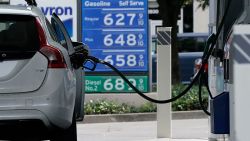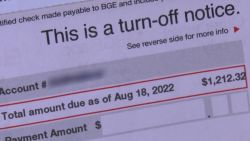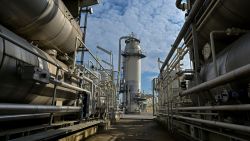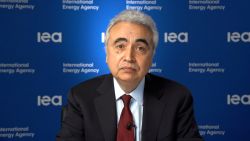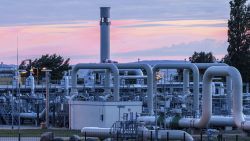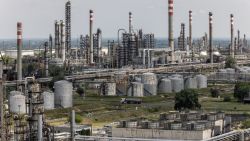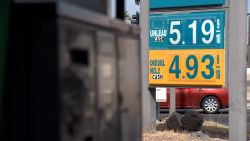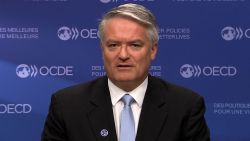High oil and gasoline prices will need to rise even higher this summer to incentivize new production and discourage consumption, according to Goldman Sachs.
The Wall Street bank is now forecasting Brent crude oil prices will average $140 a barrel between July and September, up from its prior call of $125 a barrel. Brent is currently trading at about $120 a barrel.
Worse, Goldman Sachs said summer retail gas prices are going to need to spike to levels normally associated with $160 oil in order to curtail demand.
“A large spike in prices remains quite possible this summer,” Goldman Sachs strategists wrote in a report to clients.
The forecast suggests that the worst is not nearly over for consumers already dealing with high gas prices.
The national average price for regular gasoline jumped another five cents on Tuesday to a fresh record of $4.92 a gallon, according to AAA. That’s up by 30 cents over the past week and 62 cents in the past month.
“It’s driving me crazy. I’m looking at this thing right now — $5.99? Are you serious?” asked Cleavie Jordan, an MTA conductor filling up his tank in Manhattan.
Thirteen states and Washington, DC already have an average gas price of $5 or higher, with New Jersey, Massachusetts and Maine hitting that threshold Tuesday. Ohio, Pennsylvania, Utah and Idaho are just pennies away from $5.
Goldman Sachs is now calling for Brent oil to average $135 a barrel during the second half of this year and first half of next. That’s up $10 from the bank’s previous forecast.
“We believe oil prices need to rally further to normalize the unsustainably low levels of global oil inventories, as well as OPEC and refining spare capacities,” Goldman Sachs strategists wrote.
In March, Brent briefly spiked to a nearly 14-year high of $139.13 a barrel. But that proved temporary as oil prices quickly retreated from there. Goldman Sachs is calling for a more sustained spike, where Brent would average $140 for the entire quarter.
That’s just shy of the $150 level that Moody’s Analytics economist Mark Zandi warned would spell major trouble for the US economy.
“If oil prices go to $150, we are going into recession” Zandi told CNN. “There is no way out.”
The bank did not specify how high it anticipates gasoline prices to go, saying only that oil prices need to get so expensive that they cause a 500,000 barrel-per-day decline in demand to rebalance the market.
The US Energy Information Administration on Tuesday also ramped up its projections for oil, gasoline and natural gas prices, saying it no longer expects gasoline prices to tumble back below $4 a gallon by September.
“Although we expect the current upward pressure on energy prices to lessen, high energy prices will likely remain prevalent in the United States this year and next,” EIA Administrator Joe DeCarolis said in a statement.
For its part, the EIA now expects Brent crude oil will average $111.28 a barrel in the third quarter and $104.97 a barrel in the fourth quarter. That is up from the EIA’s forecast a month ago for Brent to average $103.98 and $101.66, respectively.
“We continue to see historically high energy prices as a result of the economic recovery and the repercussions of Russia’s full-scale invasion of Ukraine,” DeCarolis said.
The good news is the EIA does not anticipate $4 gas will be the norm through 2023. The agency forecasts gas will average $3.87 a gallon for the final three months of the year, although that’s up from $3.59 previously.
For 2023, the EIA upped its forecast for gasoline to an average of $3.66, compared with $3.51 previously. But that would still be a big improvement from the $4.07 price per gallon expected this year.
The problem, the EIA said, is that oil and gasoline inventories are low. The agency also noted that refinery production is relatively low compared with pre-Covid levels.
The EIA said its forecast incorporates the assumption that the European Union will follow through on its plan to ban seaborne crude oil and petroleum product imports from Russia. However, the forecast does not include potential restrictions on shipping insurance because details are not known.
And while the United States and OPEC+ are expected to modestly increase production, the EIA expects Russia’s production will tumble by 1.1 million barrels per day between May 2022 and the end of 2023. That is a steeper decline than the EIA previously expected.


